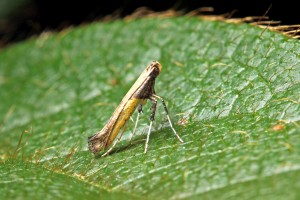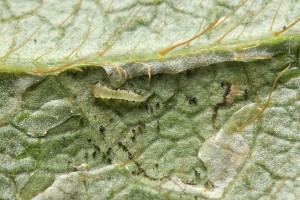What Is Azalea Leafminer? Nursery Pest Alert!
go.ncsu.edu/readext?412026
en Español / em Português
El inglés es el idioma de control de esta página. En la medida en que haya algún conflicto entre la traducción al inglés y la traducción, el inglés prevalece.
Al hacer clic en el enlace de traducción se activa un servicio de traducción gratuito para convertir la página al español. Al igual que con cualquier traducción por Internet, la conversión no es sensible al contexto y puede que no traduzca el texto en su significado original. NC State Extension no garantiza la exactitud del texto traducido. Por favor, tenga en cuenta que algunas aplicaciones y/o servicios pueden no funcionar como se espera cuando se traducen.
Português
Inglês é o idioma de controle desta página. Na medida que haja algum conflito entre o texto original em Inglês e a tradução, o Inglês prevalece.
Ao clicar no link de tradução, um serviço gratuito de tradução será ativado para converter a página para o Português. Como em qualquer tradução pela internet, a conversão não é sensivel ao contexto e pode não ocorrer a tradução para o significado orginal. O serviço de Extensão da Carolina do Norte (NC State Extension) não garante a exatidão do texto traduzido. Por favor, observe que algumas funções ou serviços podem não funcionar como esperado após a tradução.
English
English is the controlling language of this page. To the extent there is any conflict between the English text and the translation, English controls.
Clicking on the translation link activates a free translation service to convert the page to Spanish. As with any Internet translation, the conversion is not context-sensitive and may not translate the text to its original meaning. NC State Extension does not guarantee the accuracy of the translated text. Please note that some applications and/or services may not function as expected when translated.
Collapse ▲May 18, 2016
While visiting eastern NC nurseries last week an insect called the azalea leafminer, Caloptilia azaleella, was mentioned. The next day I receive an email from a county agent requesting a nursery visit to confirm the presence of the same insect. Both instances were on Encore azaleas but this pest attacks all azaleas.
Azalea leafminer adult moths emerge about the time of first spring flowering. They overwinter as pupae in rolled leaves or as larvae in mined leaves. Adults are no more than one-half inch long and yellow with purple markings near the base and apex of their forewings. They stand at attention when at rest at a 60 degree angle to the leaf and have antennae the length of their body.
After mating, adults deposit individual eggs (up to 5) along the mid-vein on the underside of leaves. These should be visible with a hand lens when scouting.
Yellow larvae are caterpillars. They hatch in about 4 days and enter the leaf tissue leaving mines that are light green. Larvae reach one-quarter to one-half inch in length at maturity.
When they get larger the larvae emerge from the leaf and become a leaf tier. Leaf tissue in the abandoned mines dies and turns brown.
They roll leaf tips downward and feed causing holes and/or browning of tissue.
When larvae reach full size they move to the edge of the leaf and slightly roll it to pupate. Adult moths hatch in about 7 days and the process begins again. There are multiple generations each year in the south.
Adults can may be targeted with contact insecticides like pyrethroids (bifenthrin, cyfluthrin, permethrin). Abamectin (translaminar systemic), azadirachtin (insect growth regulator, botanical, and antifeedant), and spinosad (natural bacterium) will aid in control of larvae at first sign of injury. Systemic products to consider for rotation are acephate (organophosphate) and acetamiprid (the only neonicotinoid with some activity on caterpillars). Since larvae feed in the leaf tissue initially and they roll leaves to protect themselves, they are difficult to control with contact products only. Scout weekly starting at flowering to determine life stage present, need for application, and rotation plan based on insect development. There are some parasitoids that target this pest.
More detailed information can be found in the following references used:
NC State Entomology Azalea Leaf Miner Fact Sheet
2016 NC Agricultural Chemicals Manual go to page 163 for leafminers
University of Florida Featured Creatures
Pacific Northwest Insect Management Handbook
At present in central eastern NC this pest is in it’s 2nd generation as an adult and will be laying eggs, hatching, and leaf mining soon. Inspect azaleas now for adults, signs of leafminers and leaf tiers, and symptoms of damage.
Danny Lauderdale, Area Specialized Agent, Nursery & Greenhouse-Eastern Region. Thanks to Dr. Steve Frank, Extension Entomologist, for editing and review and to Matt Bertone for his excellent images!













